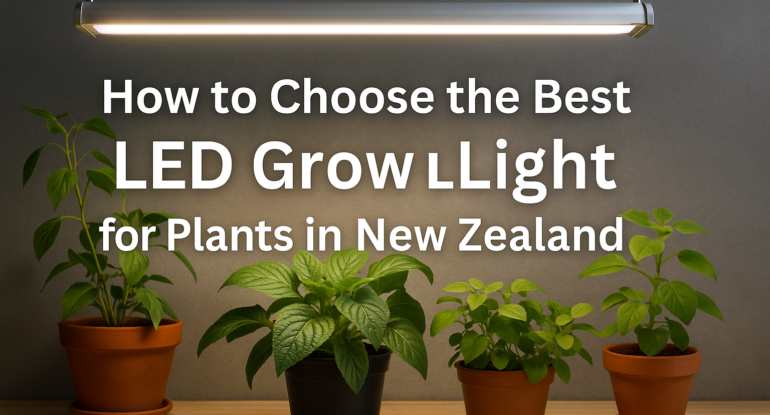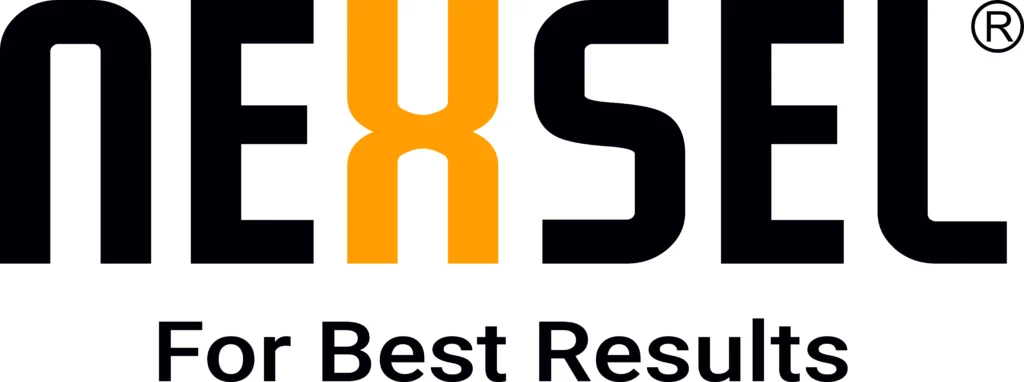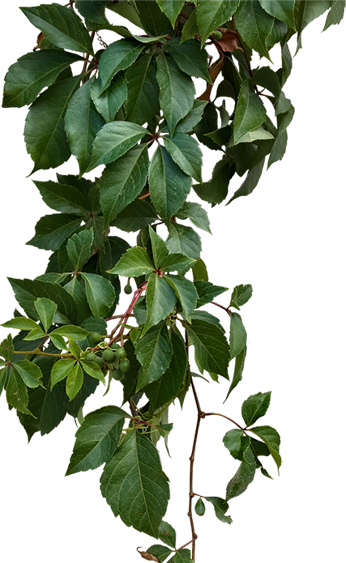
06
May
How to Choose the Best LED Grow Light for Plants in New Zealand (Beginner’s Guide)
Introduction Indoor gardening and controlled-environment agriculture are booming in New Zealand. Whether you’re a hobbyist in Wellington, a commercial grower near Christchurch, or a research lab in Auckland, LED grow lights have become the gold standard for energy-efficient, high-yield plant cultivation. This beginner’s guide walks you through every consideration—from light spectrum and wattage to NZ-specific factors—so you can confidently choose the best LED grow light for your needs. “Lighting is the most critical factor in any indoor garden. Get it right, and your plants will reward you with faster growth and higher yields.” Why Choose LED Grow Lights? LED technology has revolutionized indoor growing. Here’s why Kiwi growers prefer LED grow lights over traditional options: Energy Efficiency: Up to 50–70% less power consumption than HPS or fluorescent lights. Tailored Spectrum: Full-spectrum white LEDs or red/blue combinations tuned for photosynthesis. Low Heat Output: Allows lights to sit closer to foliage, improving light penetration and reducing cooling costs. Longevity: Rated for 50,000+ hours of use—equivalent to 10+ years in many home setups. Compact & Scalable: Choose bars, panels, or bulbs to fit any space, from windowsills to vertical farms. These benefits translate to lower electricity bills—critical in NZ where commercial rates can exceed NZD 0.25/kWh—and healthier, faster-growing plants. Key Factors When Selecting an LED Grow Light 3.1 Light Spectrum (PPFD & PAR) Photosynthetically Active Radiation (PAR): 400–700 nm wavelengths drive photosynthesis. PPFD (μmol/m²/s): Measures how many photons hit your canopy each second. Seedlings/Clones: 100–200 μmol/m²/s Vegetative Growth: 300–600 μmol/m²/s Flowering/Fruiting: 600–900 μmol/m²/s Spectrum Options: Full-spectrum white LEDs for balanced growth Dual-spectrum red/blue for energy-efficient veg/flower cycles Tunable LEDs let you adjust spectrum by growth stage 3.2 Wattage vs. Efficiency Actual Power Draw (W): How much electricity the fixture uses. PPE (μmol/J): Efficiency metric—higher means more light per watt. Look for > 2.2 μmol/J for commercial-grade bars/panels. Home hobbyists can use 1.8–2.0 μmol/J fixtures. 3.3 Coverage Area & Penetration Footprint: The area (in m²) a light effectively covers at recommended hang height. e.g. a 600 W panel might cover 1.2 × 1.2 m at 30 cm above canopy. Light Uniformity: Even PPFD across the canopy avoids hotspots/low zones. Penetration: High canopy penetration ensures lower leaves get enough light. 3.4 Heat Output & Thermal Management Passive Cooling (Heatsinks): Silent but less efficient at high loads. Active Cooling (Fans): Better for high-power fixtures, but generates noise. Ambient Temperature: In summer months (Jan–Feb), NZ indoor temps can spike—good thermal design prevents heat stress. 3.5 Adjustability & Control Features Dimming: Allows precise intensity control for veg vs. bloom phases. Timers & Schedules: Built-in or external timers automate photoperiods. Wireless/App Control: Remote spectrum/intensity adjustments via smartphone. Types of LED Grow Lights 4.1 LED Bars Use Case: Vertical racks, tissue culture labs, narrow benches. Advantages: Slim form factor, easy daisy-chaining, uniform linear coverage. Example: 4 ft × 17 W LED Light Bars—ideal for leafy greens. 4.2 LED Panels Use Case: Commercial greenhouses, large tents, research chambers. Advantages: Broad coverage, high PPFD, modular design. Example: 600 W full-spectrum panel covering ~1.2 × 1.2 m. 4.3 COB & Quantum Board Lights Use Case: High-intensity small footprints, deep canopy penetration. Advantages: High lumen and photon output per diode, superior PPE. Example: 200 W COB combined with reflective optics for focused lighting. 4.4 Full-Spectrum vs. Adjustable Spectrum Fixed Full-Spectrum: Ready-to-use “white light”—simple and versatile. Tunable Spectrum: Separate veg/flower channels—maximizes efficiency per growth stage. Matching Lights to Your Plants 5.1 Seedlings & Clones Light Level: 100–200 μmol/m²/s Fixture Type: Low-wattage panels or LED bars; dimmable for tender plants. 5.2 Leafy Greens & Herbs Light Level: 300–500 μmol/m²/s Fixture Type: Full-spectrum panels or bars in hydroponic setups. Tip: Use multiple low-watt bars spaced evenly for uniform canopy. 5.3 Flowering & Fruiting Plants Light Level: 600–900 μmol/m²/s Fixture Type: High-power panels or COB clusters for penetration. Tip: Supplement with red-heavy spectrum during bloom phases. New Zealand–Specific Considerations 6.1 Seasonal Daylight Variations Winter (May–Aug): Short days (down to ~8 hours in South Island) Summer (Nov–Feb): Long daylight (up to ~15 hours) Strategy: Increase photoperiods and PPFD in winter to maintain growth rates. 6.2 Energy Costs & Efficiency Commercial Rates: NZD 0.20–0.30/kWh Home Rates: NZD 0.25–0.35/kWh (varies by region and provider) Tip: Choose fixtures with PPE > 2.0 μmol/J to minimize power bills. 6.3 Local Availability & Support Authorized Dealer: Growlight.co.nz stocks Nexsel Tech fixtures with NZ warranty. Support: Local tech support, replacement parts, and fast shipping across NZ. Installation & Maintenance Tips Height & Hangings: Seedling stage: 30–45 cm above canopy Veg stage: 30 cm Flower stage: 20–25 cm Photoperiod Scheduling: Veg: 16 hours on / 8 hours off Flower: 12 hours on / 12 hours off Cleaning: Dust LEDs and heatsinks bi-monthly to maintain output. Monitoring: Use PAR meter or smartphone apps to verify PPFD. Check leaf color and stretch for signs of light stress. Budgeting & Return on Investment Initial Investment: Hobbyist bar (9–17 W): NZD 50–150 each Commercial panel (300–600 W): NZD 600–1,200 Payback Period: With 20 % energy savings over HPS, many growers recoup costs within 12–18 months. Long-Term Savings: LEDs last 5–10× longer than HPS; reduced ballast replacement and cooling expenses. Use Case Recommended Fixture Key Specs Seedlings & Clones 2 ft LED Bar (9 W) 1.8 µmol/J, 100 µmol/m²/s, white spectrum Leafy Greens (Home Tents) 4 ft LED Bar (17 W) 2.0 µmol/J, 300 µmol/m²/s, daisy-chainable Small Indoor Gardens (Hobby) 200 W Quantum Board 2.2 µmol/J, full-spectrum Commercial Greenhouses 600 W Panel w/ Dimming & App Control 2.5 µmol/J, 1.2×1.2 m footprint Speed Breeding Chambers Tunable Dual-Spectrum Panel (450 W) 2.3 µmol/J, veg/bloom channels Tissue Culture Labs 36 W LED Tube (Replace 64 W CFL) 2.0 µmol/J, minimal heat All fixtures are available in New Zealand with local support and warranty from Growlight.co.nz. Conclusion & Next Steps Choosing the best LED grow light in New Zealand means balancing spectrum, wattage, coverage, and budget—while considering local energy costs and daylight patterns. By following this guide, you’ll be equipped to select a fixture that boosts plant health, maximizes yield, and delivers long-term



